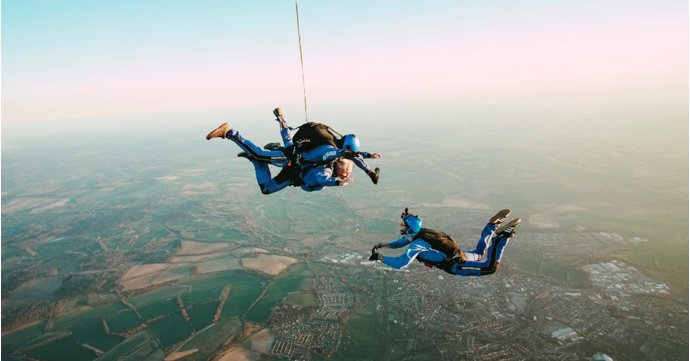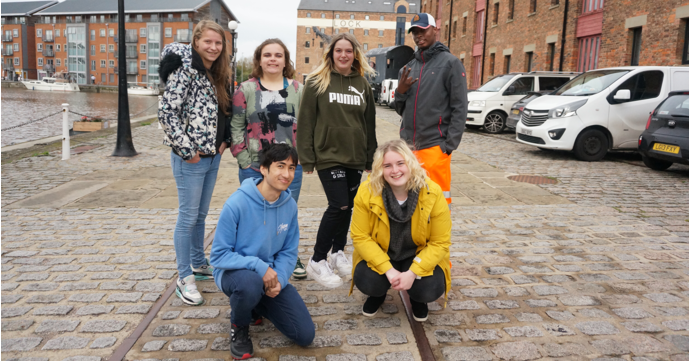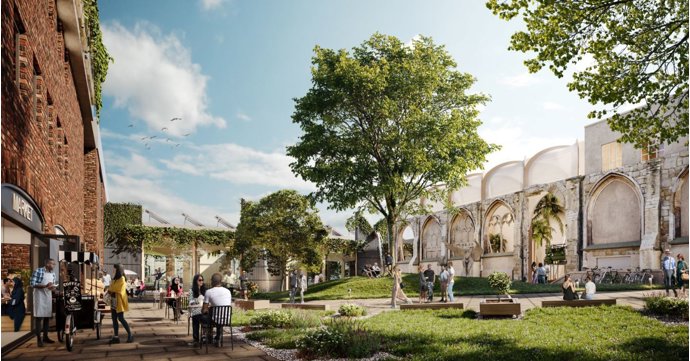From making communities feel safer to challenging negative stereotypes, Active Bystander training is a powerful tool to prevent harrassment and abuse in all its forms.
SoGlos's Charity of the Year, the Hollie Gazzard Trust, offers Active Bystander training to communities, schools and businesses all over the county — with SoGlos rounding up 10 reasons to invest in this valuable skill.
Understand the role of bystander
There are many ways an Active Bystander can intervene in a negative situation — and not all of them are through direct action.
While direct action is one of the ways to intervene, indirect action such as distraction, by striking up a conversation with the person at risk to draw them away or divert attention; delegation, by asking someone else to help and intervene on your behalf; or delay, by checking in with the victim once the immediate danger has passed to offer them emotional support, are all powerful and valid ways to be an Active Bystander.
Empower individuals to intervene
Many individuals want to intervene when they see harrassment or abuse happening, but perhaps they don't because they don't know how to, or don't feel they have the skills to do this safely.
Active Bystander training empowers people with the skills to intervene without putting themselves, or the victim, in danger — and shows people that when and how they choose to intervene is entirely up to them, based on how they feel about the situation and their own level of comfort or safety.
Alter group dynamics
When a perpetrator is within a social group and makes an inappropriate comment, if nobody calls this out, they may believe that everyone in the group feels the same way they do — when often, this isn't the case.
Being an Active Bystander tells everyone in that social group that this behaviour isn't acceptable and that it's safe to intervene, which can change the group norm and help the perpetrator to change their own beliefs and behaviours, without feeling ostracised from their friends.
Prevent escalation that leads to violence
The pyramid of discrimination and violence is a visual representation used by educators to show how attitudes and beliefs like sexism, racism, ableism, homophobia and transphobia — at the bottom of the pyramid — can escalate to dangerous levels like physical violence and hate crimes — at the top of the pyramid — if left unchecked.
Intervention by Active Bystanders can prevent the verbal expression of these problematic beliefs from escalating into physical expressions of violence.
Challenge negative stereotypes
Belief in negative stereotypes can come from a multitude of places, from the family home, TV shows and mainstream media to TikTok and YouTube — but just because some of these stereotypes are common, it doesn't make them true.
Active Bystander training allows individuals to challenge these negative stereotypes safely and remind perpetrators that the things they say and do affect real people that they know and love, reminding them of their humanity and helping them to feel empathy towards others.
Put the victim first
While it's easy to put all of the focus on the perpetrator in situations of harassment or abuse, in an Active Bystander situation, it's more important to be checking on the victim and offering them support.
One of the key ways Active Bystanders can turn negative situations around is by helping to remove the victim from potential danger and making sure they feel safe. It's also important to consult the victim and give them the support they want, rather than assuming what they need — not everyone will feel comfortable involving the police, for example.
Stop the shame spiral
Problematic beliefs and behaviours can often go hand-in-hand with feelings of shame around the perpetrators own identity. Those beliefs and behaviours can be exacerbated when those feelings of shame are reinforced by things like sweeping generalisations and feeling ostracised or othered.
Active Bystander training teaches participants to try and find some common ground with perpetrators, coming at the situation from a place of compassion rather than judgement, which can interrupt the shame spiral and help the person make positive changes.
Invest in your staff
For businesses, offering Active Bystander training is a wonderful way to invest in your team's personal and professional development.
The Hollie Gazzard Trust offers a variety of workshops tailored to businesses' needs, including Active Bystander, giving staff the chance to learn new skills they can use both inside and outside of work, which can help make them feel valued.
Make communities safer
While intervening in an individual situation can feel like a small step, the more people who speak up when they hear problematic beliefs or step in when they see inappropriate behaviour sends a strong message that these things aren't acceptable in our society.
Not only does it show perpetrators that these beliefs and behaviours won't be tolerated, it also shows people who don't share those beliefs that it's ok to speak up — and those who are targeted that there are people who are willing and able to help, making our communities safer for everyone.
Create a safe working environment
For many people experiencing domestic abuse, stalking or sexual harassment, they're targeted at their workplace, meaning they don't have anywhere they truly feel safe.
Active Bystander training can help colleagues not only spot the signs of domestic abuse, stalking and sexual harassment, but intervene if there's a problem which occurs at work and offer support to their colleague in a meaningful way — signposting them to further help, if they need it.
To find out more about Active Bystander training, or to book a workshop, visit holliegazzard.org.





















